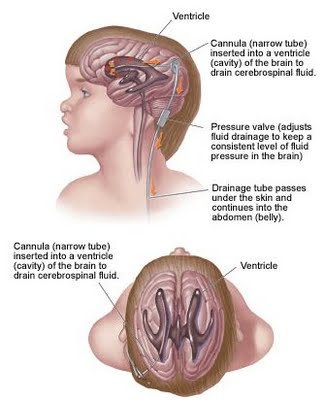Obesity is a global problem that plagued the world today. Lifestyle changes including the propensity to consume foods high in fat is a factor contributing to obesity.
The majority of obesity is due to overeating. It is considered the primary obesity. And others, caused by disease or hormonal disorders or genetic disorders that are in the secondary obesity.
Efforts to streamline the body have been conducted, including the dietary, lifestyle changes, medication and surgery to reduce fat or remove some of the intestines.
Food intake should always be sufficient to meet the needs of the body's metabolism and is also not excessive, causing obesity. Also, because the foods contain different proportions of protein, carbohydrate, and fat are different, then a reasonable balance must be maintained among all of these foods so that all segments of the body's metabolic system can be supplied with the materials needed.
Definition of Obesity
Obesity is defined as the excess accumulation of body fat, at least 25% of the average weight for age, sex, and height.
Obesity is also a pathological condition with the presence of an excessive accumulation of fat than is necessary for bodily functions. Nutritional problems due to excess calories usually accompanied by excess fat and protein, fiber and micro-nutrient excess. Nutrients that would be a risk factor for the occurrence of various types of degenerative diseases such as diabetes, hypertension, coronary heart disease, rheumatism and various types of malignant disease (cancer) and other health problems that would require a very large medical expenses.
Clinical Manifestations of Obesity
Obesity can occur in all age groups, but usually occurs in children and adolescents in the period ahead of teens, especially girls, in addition to body weight increased rapidly, as well as more rapid growth and development (apparently if you check the age of the bones), so that ultimately adolescents rapidly grow and mature it will have a relatively low height compared to children her own age.
Body shape, appearance and expression in patients with obesity:
a. Thighs look great, especially on the proximal, relatively small hands with fingers shaped tapered.
b. Emotional expression disorder, nose and mouth appears to be relatively small with a double chin shaped.
c. Chest and enlarged breasts, breast forms similar to the breast that had been grown in male children such circumstances lead to an unpleasant feeling.
d. Abdomen, and hung bulge, similar to the form of pendulum clocks, there are sometimes white or purple strie.
e. Upper arms enlarged, the enlargement of the upper arm is usually found in the biceps and triceps.
In people, common symptoms of emotional distress which may be the cause or circumstances of obesity.

Nursing Assessment for Obesity
Physical Examination
1. Activity / Rest
symptoms:
- Weakness, drowsiness trended
- Inability / lack of desire to be active or exercise regularly
- Dyspnea with work
signs:
- Increased heart rate / breathing with activity
2. circulation
symptoms:
- History of cultural factors / lifestyle affects food choices
- Weight loss can / can not be accepted as a problem
- Eating may relieve feelings of pleasure, such as loneliness, frustration, boredom
- Prisoners of the closest people to lose weight
3. Food / fluid
symptoms:
- Digesting food with excess / normal
- Experiment with different types of diet with little results
- History repeated and decreased weight gain
signs:
- Weight loss is not right with height
- Endormofik body type (soft / about)
- Failed to determine the input of food to reduce demand (eg, changes in lifestyle from active to not exercise, aging)
4. Pain / Comfort
Symptoms: Pain / discomfort in the joints that support weight loss or spine
5. Breathing
Symptoms: Dyspnea
Signs: cyanosis, respiratory distress
6. Sexuality
Symptoms: menstrual disorders, amenorrhea
7. Education / learning
symptoms:
- Problems can be either lifetime or in connection with life events
- Family history of obesity
- Health problems that accompany diabetes, including hypertension, gallbladder disease and cardiovascular disease, hypothyroidism
Nursing Diagnosis for Obesity
Nursing Interventions for Obesity
Read More..
The majority of obesity is due to overeating. It is considered the primary obesity. And others, caused by disease or hormonal disorders or genetic disorders that are in the secondary obesity.
Efforts to streamline the body have been conducted, including the dietary, lifestyle changes, medication and surgery to reduce fat or remove some of the intestines.
Food intake should always be sufficient to meet the needs of the body's metabolism and is also not excessive, causing obesity. Also, because the foods contain different proportions of protein, carbohydrate, and fat are different, then a reasonable balance must be maintained among all of these foods so that all segments of the body's metabolic system can be supplied with the materials needed.
Definition of Obesity
Obesity is defined as the excess accumulation of body fat, at least 25% of the average weight for age, sex, and height.
Obesity is also a pathological condition with the presence of an excessive accumulation of fat than is necessary for bodily functions. Nutritional problems due to excess calories usually accompanied by excess fat and protein, fiber and micro-nutrient excess. Nutrients that would be a risk factor for the occurrence of various types of degenerative diseases such as diabetes, hypertension, coronary heart disease, rheumatism and various types of malignant disease (cancer) and other health problems that would require a very large medical expenses.
Clinical Manifestations of Obesity
Obesity can occur in all age groups, but usually occurs in children and adolescents in the period ahead of teens, especially girls, in addition to body weight increased rapidly, as well as more rapid growth and development (apparently if you check the age of the bones), so that ultimately adolescents rapidly grow and mature it will have a relatively low height compared to children her own age.
Body shape, appearance and expression in patients with obesity:
a. Thighs look great, especially on the proximal, relatively small hands with fingers shaped tapered.
b. Emotional expression disorder, nose and mouth appears to be relatively small with a double chin shaped.
c. Chest and enlarged breasts, breast forms similar to the breast that had been grown in male children such circumstances lead to an unpleasant feeling.
d. Abdomen, and hung bulge, similar to the form of pendulum clocks, there are sometimes white or purple strie.
e. Upper arms enlarged, the enlargement of the upper arm is usually found in the biceps and triceps.
In people, common symptoms of emotional distress which may be the cause or circumstances of obesity.

Nursing Care Plan for Obesity
Nursing Assessment for Obesity
Physical Examination
1. Activity / Rest
symptoms:
- Weakness, drowsiness trended
- Inability / lack of desire to be active or exercise regularly
- Dyspnea with work
signs:
- Increased heart rate / breathing with activity
2. circulation
symptoms:
- History of cultural factors / lifestyle affects food choices
- Weight loss can / can not be accepted as a problem
- Eating may relieve feelings of pleasure, such as loneliness, frustration, boredom
- Prisoners of the closest people to lose weight
3. Food / fluid
symptoms:
- Digesting food with excess / normal
- Experiment with different types of diet with little results
- History repeated and decreased weight gain
signs:
- Weight loss is not right with height
- Endormofik body type (soft / about)
- Failed to determine the input of food to reduce demand (eg, changes in lifestyle from active to not exercise, aging)
4. Pain / Comfort
Symptoms: Pain / discomfort in the joints that support weight loss or spine
5. Breathing
Symptoms: Dyspnea
Signs: cyanosis, respiratory distress
6. Sexuality
Symptoms: menstrual disorders, amenorrhea
7. Education / learning
symptoms:
- Problems can be either lifetime or in connection with life events
- Family history of obesity
- Health problems that accompany diabetes, including hypertension, gallbladder disease and cardiovascular disease, hypothyroidism
Nursing Diagnosis for Obesity
Nursing Interventions for Obesity

